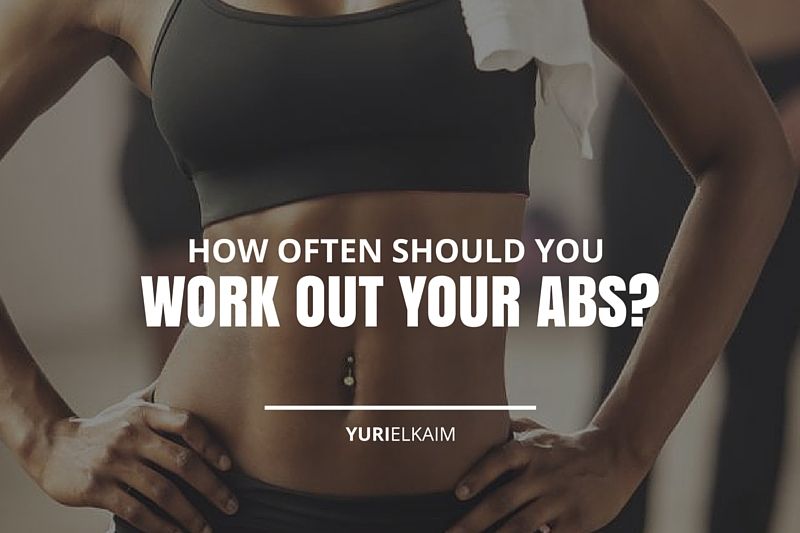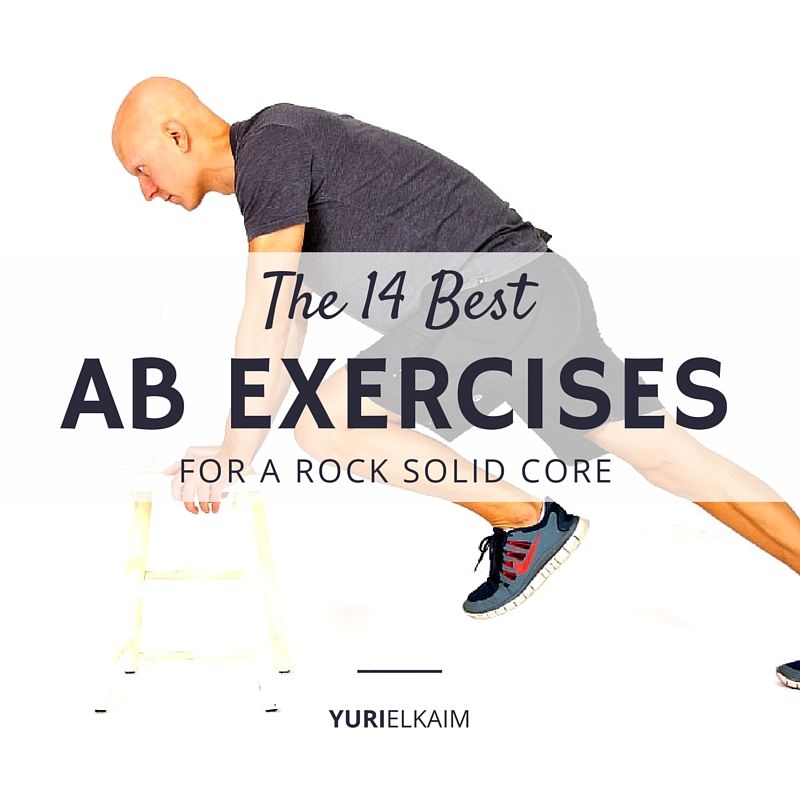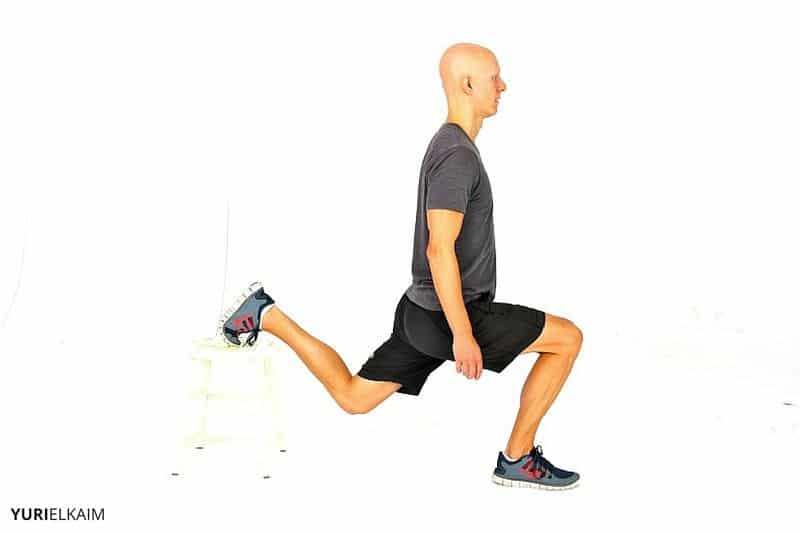In this article
Want to know the best way to get into shape and get six-pack abs?
Just ask a couple of “experts.” Chances are you’ll get a different answer from each person you talk to, and end up feeling even more confused about what to do.
And when it comes to working abs, not only will you get different advice about which exercises to do, but how often you should do them.
Now, I’m not implying that anyone is intentionally spreading misinformation. There’s just a lot of folklore when it comes to properly sculpting ab muscles.
Let’s set the record straight.
Your Abs Need Rest
First, let’s be clear about something that people tend to forget: Abs are just like any muscle in your body.
And, just like any other muscle, they need time to recover.
Remember, when you exercise, you are challenging your muscles and even damaging them to a slight degree. That damage, however, is a good thing. That’s because in response, your brain decides that the muscle needs to be rebuilt bigger and stronger.
Here’s the important thing to know: the rebuilding process doesn’t happen when you’re exercising – it happens during the recovery process.
So, if you slightly damage a muscle and don’t let it completely recover, you’re not getting the most out of your workouts.
That’s why more is not better. And that goes for every muscle, not just your abs.
Now, I understand how zealous people can be when working on their six-pack, but denying your abs proper recovery time will not only stop you from making progress, it could potentially do some real, lasting damage.
How Often Should You Work Out Abs?
So if we need to be careful not to overtrain our abs and other muscles, how much is too much?
Sometimes, you’ll hear that you should train your abs every day in order to effectively develop your six-pack.
As you probably guessed, I disagree. Again, your abs need time to recover before you put them through the rigors of exercise again.
But here’s something worth considering: Your abs do tend to recover faster than other muscle groups, simply because they’re used to working all day, every day. They support your spine through every movement you make.
Even sedentary individuals who rarely exercise use their abs on a regular basis. After all, these muscles are about a lot more than just looks – they work to keep you upright, balanced, and mobile in almost everything you do.
This means that you can generally train your abs a little more frequently than you would other muscle groups.
But every day is still too often.
Exactly how often you should train your abs is a hard question to answer, because we’re all different. There are many individual factors that play into the answer, like your diet, overall lifestyle, fitness level, and training style, which all impact your recovery speeds.
Usually, however, I recommend at least two days of rest each week. It’s up to you how you distribute those recovery days.
The most common approach is to work your abs every other day during the week. And since most people should only be strength training three time each week, this fits perfectly.
Exercises and Body Fat
While we’re on the subject, I would be remiss if I didn’t talk about the importance of choosing the right abdominal exercises.
If you’re doing dozens of crunches and sit-ups, you’re not going to get the results you want, and you also could end up with a sore back and muscle imbalances.
Instead, I recommend doing stability exercises that challenge your core from 360 degrees – exercises like planks, bird dogs, and more – which you can find in this illustrated list of the 14 best ab exercises.
And here’s another important key:
If you want to have a visible six-pack, you need to burn belly fat – and to do that, you need to burn fat over all parts of your body.
That’s because spot reduction doesn’t work, and doing ab exercises unfortunately doesn’t do much in the way of fat burning.
Why?
The abs aren’t big muscles. They don’t need a lot of calories to function, which means that doing ab work isn’t going to make a noticeable difference in either your overall body fat.
And it also won’t target the fat on your belly, either. The idea that you can selectively train a certain muscle group and just burn fat from that area is called “spot training.” And, according to a massive pile of research, it is a myth. (1)
[Related: 10 Blatant Fitness Myths, Finally Debunked]
When you work out, instead of burning only the fat surrounding a working muscle, your body pulls it from wherever it wants. The exact order and proportion of this fat use is dictated by gender, genetics, medical conditions, and several other individual factors.
This doesn’t mean ab training is useless. Your abdominal muscles are vital to physical performance and stability. You need them to be strong.
And even if we aren’t worried about strength and only care about how your abs look, you’re going to want to train your abs.
Think about it:
If you lost all that fat but did not have developed muscles, would you have a six-pack?
No. You might have a flat stomach, but that distinct shape is based on the actual layout of the muscles. Without proper training, the fibers just won’t stand out enough to be visible.
Fat Loss Prescription
To blast the fat around your abs, you need to focus on full-body strength training.
That might sound crazy, but consider what we just talked about.
Body fat is burned from across the body. The most effective way to shed pounds, then, is to do whatever it takes to burn the most calories – regardless of the muscle being trained.
The best way to burn tons of calories in a short time is to focus on big, compound exercises that target your major muscle groups.
That includes lifts like squats and deadlifts, which challenge your biggest muscle groups to do the heavy lifting, while engaging lots of other smaller muscles for balance and support.
Bulgarian Split Squat
Here are a couple posts to get you started:
- The Ultimate Guide to the Best Compound Dumbbell Exercises
- The 19 Best Glute Exercises of All Time (The Definitive Guide)
Ab Training Bottom Line
Okay, let’s wrap this up.
I recommend working your abs every other day – or at the most, taking two days off from ab work each week.
But, remember, if you’re trying to lose body fat and reveal your six-pack, you need more than ab training.
To really rev up your metabolism and chisel off the fat, you need to work your biggest muscles with large compound movements.
The Secret to a Flat Belly
Want to finally attain that sculpted core? Discover my 7 unknown ways to lose belly fat and get toned abs – for FREE!
Click the banner below to download the Abs Secret Blueprint.



